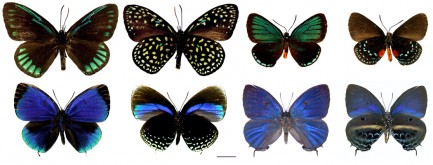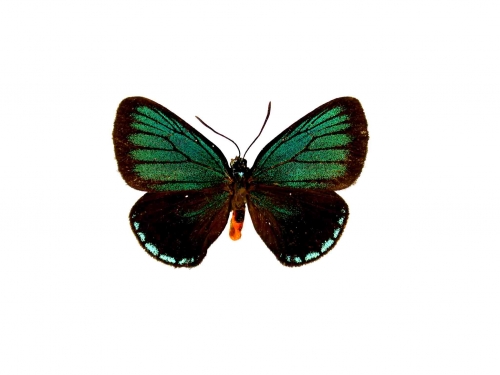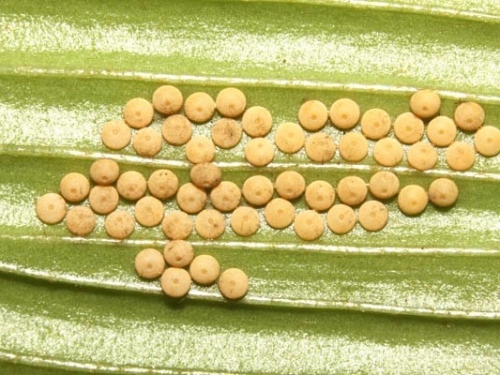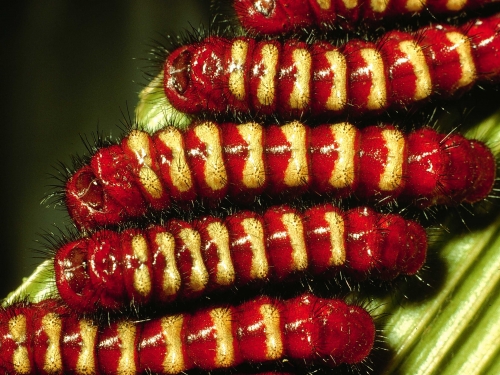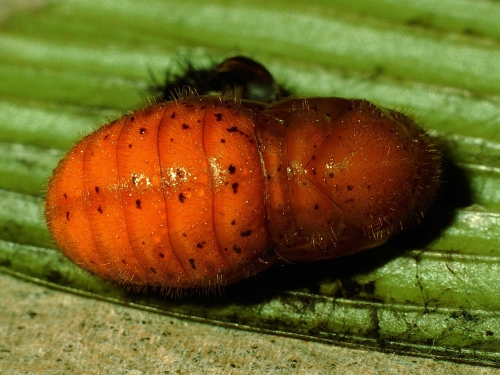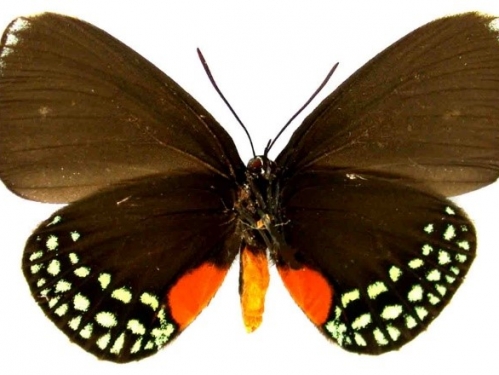Eumaeus atala butterfly (top right) and Eumaeus childrenae (top left) with other close relatives studied by the research team, including Theorema eumenia (bottom left) and Mithras nautes (bottom right); all shown from above on the left and shown from below on the right.
New research published in the Feb. 8 issue of the journal the Proceedings of the National Academy of Sciences and led by the Smithsonian’s National Museum of Natural History butterfly curator Bob Robbins tells the evolutionary tale of how these six poisonous butterflies gained their toxin-laced defenses as well as the bold colors and behaviors that tell all would-be predators to steer clear.
The paper relies on 46 sequenced butterfly genomes, including all six members of Eumaeus as well as a number of members of the 1,000-strong group of butterflies Eumaeus is related to—the hairstreaks. Robbins and his colleagues set about sequencing the genomes of Eumaeus’ six members and a bevy of other hairstreaks around three years ago, drawing on the wealth of diverse specimens held in the museum’s collections as well as some samples from wild butterflies.

